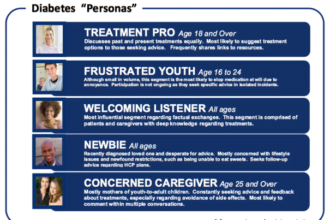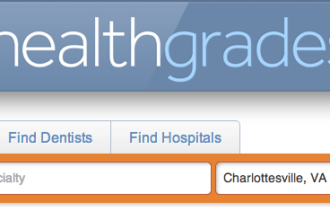I’ve always found pitching for projects with pharmaceutical companies fascinating – it reveals an enormous amount about the way in which people working inside these organisations think. It is never a simple case of right or wrong, but it is often a very different view to those of us on the outside.
In particular, digital engagement is one area where what is viewed as critical for success, and therefore merits the most attention, can be quite different, in my experience.
I’ve always found pitching for projects with pharmaceutical companies fascinating – it reveals an enormous amount about the way in which people working inside these organisations think. It is never a simple case of right or wrong, but it is often a very different view to those of us on the outside.
In particular, digital engagement is one area where what is viewed as critical for success, and therefore merits the most attention, can be quite different, in my experience.
Sitting within a pharmaceutical company, there is a clear emphasis on quantitative commercial metrics and compliance – internal factors that inform whether customer engagement is working and within the regulations. This pushes the focus towards all those internal systems and processes that can deliver against those metrics, things like CRM systems, multichannel / closed-loop marketing platforms, standard operating procedures, adverse event / crisis management rapid response systems and so forth. These feed into fascinating, colourful dashboards that tell you how many customers are being interacted with (and how often) what channels they prefer to receive information through, what your company’s share of voice is and what they are prescribing versus your competitors.
None of this is wrong, it’s essential, but it means some of the softer stuff that is actually more meaningful from a customer’s point of view often gets lost – like what you’re actually saying.

(Work by Uwe Kils) http://www.ecoscope.com/iceberg/
It’s where I draw an analogy between digital engagement and icebergs. We all know from school that the tip of an iceberg sitting above the waterline only represents about 10% of the total. The other 90% lurking beneath is like the internal machinations of a pharma company when it comes to customer engagement. If you’re sat within a big company it’s a monstrous beast of systems, roles, protocols and regulatory restrictions that has to be managed on a day-to-day basis to get everything done and it dominates your attention.
The problem is that your customers, sitting outside your company and therefore bobbing about on the surface of the water, don’t see any of that. All they see is what messages emerge in front of them and how you come across – the exposed tip of the iceberg. If you get that right, you’re building better relationships, developing better products and increasing sales. But get it wrong and, as anyone on the Titanic realised, it can have a devastating impact.
If you want a really good example of where this problem can exhibit itself then look no further than social media. It’s great to see more and more pharma companies using these channels to connect with other healthcare stakeholders, including patients, but I still see too much focus on the operational aspects of doing so and not enough on what is actually being posted and how to make it interesting.
For example, setting up a Twitter page is easy, developing a posting plan is easy and producing aligned content (e.g. articles, white papers, infographics) is easy. But doing all of this in a way that delivers genuine engagement with other people is actually pretty hard, because they don’t care about your corporate messages, your latest press release or how fabulous your booth is at the congress.
They care about the real unmet needs impacting them, their patients and their families, so you have to be relevant to be interesting and engaging. You have to start by listening and understanding, then shaping your interaction around mutual areas of interest.
The good news is that, rather like the proportions of our analogous iceberg, it doesn’t take twice the effort to get this right. It just means ensuring you focus a little bit more on the 10% that is exposed, recognising that it’s the only bit that matters to anyone outside and is critical for success.
So next time you’re planning the next world-changing digital or social media engagement campaign, I’d recommend taking time to focus away from the internal challenges – stick your head out of the water to see what your customers see and consider whether what you’re saying is genuinely cool or will simply provoke a frosty reception.









